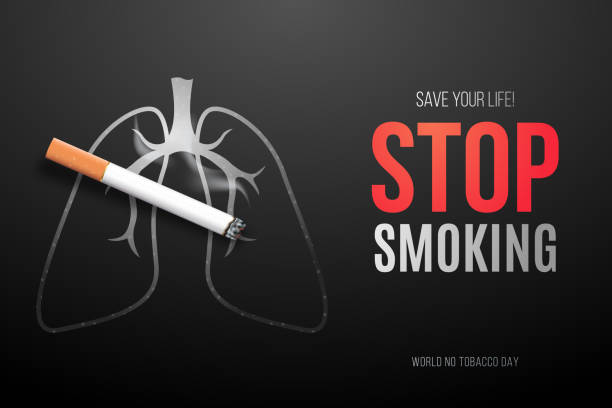
Tobacco’s dangers are widely known, yet many smokers and tobacco chewers persist in jeopardizing their lives. Tobacco usage accounts for over two-thirds of lung cancer deaths globally.
Additionally, exposure to secondhand smoke at home or work raises the risk. Infants, too, can be exposed to tobacco toxins through passive or direct smoke exposure from their mothers.
Young children face risks like asthma, pneumonia, bronchitis, and recurring lung infections due to tobacco exposure.
Nicotine, found in various forms like bidis, cigarettes, hookah, and chewable tobacco, is both addictive and hazardous.
Tobacco can harm the lungs, skin, heart, and bladder. Although approximately 40% of smokers attempt to quit each year, only a small percentage succeed (4-6%). Tobacco cravings can be intense and typically last around 10 minutes, making a systematic approach essential for quitting.
Here is a guide with effective strategies to reduce tobacco cravings and eventually quit:
Prepare for withdrawal symptoms
Acknowledging and preparing for withdrawal symptoms is a helpful method to quit smoking. Irritability, anger, anxiety, mood swings, lack of focus, increased appetite, sleeplessness, and agitation are common withdrawal symptoms. Additionally, a person may experience constipation, dizziness, nightmares, nausea, and throat problems. Having strong support from family and friends is crucial, as is participating in online tobacco cessation programs and reading Quitter’s journals for motivation.
Avoid or manage triggers
Tobacco cravings are strongest in places where a person previously smoked or chewed tobacco. Certain events, such as celebrations, parties, bars, cafes, or vacations, can also act as triggers.
Staying busy with activities like taking notes or doodling during calls or meetings can help distract from the urge to smoke. Avoiding relapse and identifying triggers can be instrumental in successfully quitting.
Try the 5A method
Ask, Advice, Assess, Assist, Arrange: Quitters should ask themselves questions about their smoking habits, last smoking instance, and reasons to quit. Seeking advice on various quitting options, assessing the relevance and risks, and arranging support and follow-ups can enhance the willingness to quit tobacco.
“Those looking to quit smoking should begin by self-reflecting and asking themselves three important questions: ‘How often do I smoke?’, ‘When was the last time I smoked?’, and ‘Why do I want to quit?’ By answering these questions, individuals can gain a deeper understanding of their smoking patterns and habits.
Once ready to embark on the quitting journey, seek advice on various quitting options available. These options may include de-addiction helplines, counseling services, group therapy programs, or other interventions. It’s essential to explore these options and find what suits you best.
The next crucial step is self-assessment, focusing on the 5Rs: Relevance, Risks, Rewards, Roadblocks, and Repetitions. Understanding the relevance of quitting, the risks associated with smoking, the rewards of quitting, potential roadblocks, and repetitive behaviors will foster greater determination to quit tobacco successfully.
Create a quit plan with clear goals and a target date for quitting. Ideally, the quit date should be set approximately two weeks after attending counseling to allow ample preparation and mental readiness.
In order to maintain motivation and progress, enlist the support of others. Surround yourself with individuals who can help remind you of follow-up visits or counseling calls to review your progress and provide encouragement along the way.”
Consider Nicotine Replacement Therapy (NRT)
Consulting healthcare professionals about NRT can provide an effective smoking cessation strategy. NRT delivers controlled amounts of nicotine to the brain, reducing withdrawal symptoms and nicotine cravings. NRT is available in various forms, including gum, inhalers, lozenges, nasal spray, and skin patches.
Remind yourself of the benefits
Creating a list of reasons for quitting smoking and resisting cigarette cravings can function as positive affirmations. Benefits like feeling better, improving health, protecting loved ones from passive smoking, and saving money for positive things should be emphasized.
Keep moving and exercise daily
Regular exercise can help reduce withdrawal symptoms and smoke cravings. Exercise triggers the release of adrenaline and endorphins, providing similar effects to nicotine. Replacing smoking with physical activities like stair climbing, prayer, stitching, housework, or journaling can be beneficial.
Quitting smoking may be challenging, but it is possible with dedication and determination. The ultimate goal is to achieve a happier and healthier life.






👍🏼